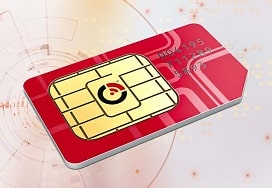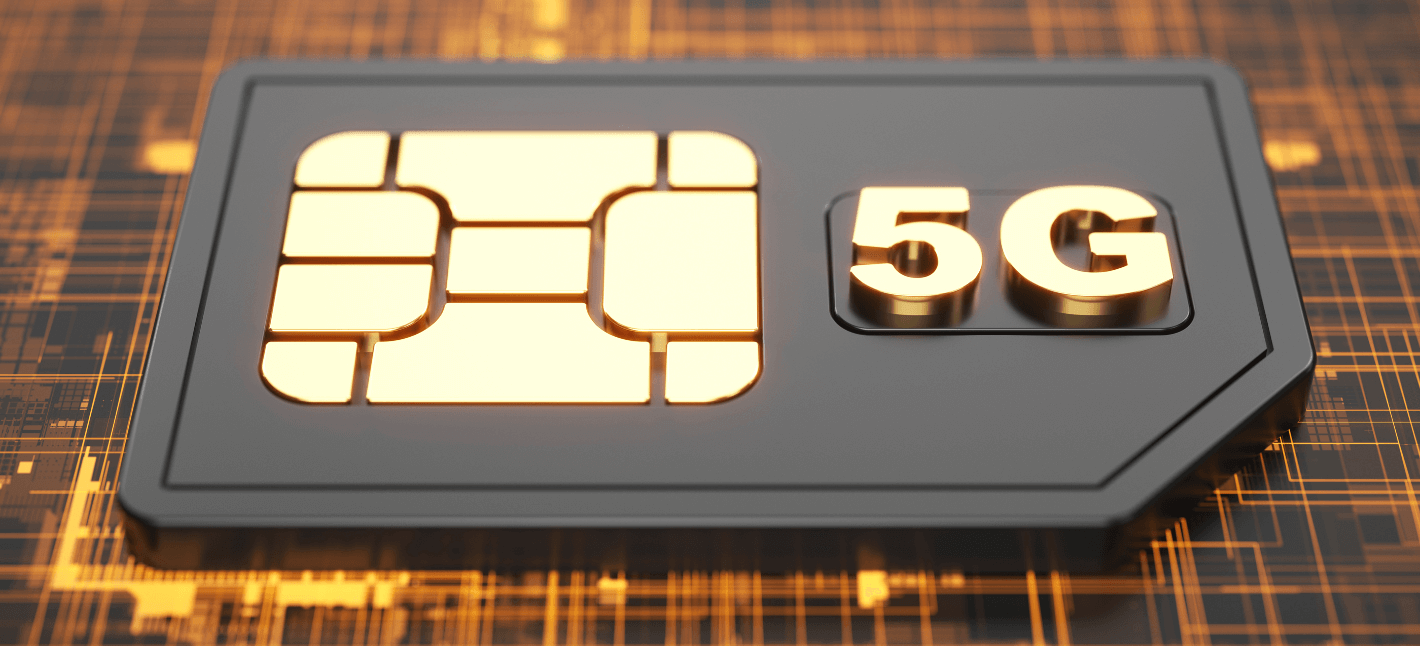Cheapest Iot Sim Card Global IoT SIM Cards Reliable Connectivity
In the panorama of the Internet of Things (IoT), connectivity standards and protocols play an important function in guaranteeing units can talk seamlessly. As extra units are linked, the need for effective interoperability increases, leading to a variety of standards that serve totally different use circumstances and necessities. This comparison of IoT connectivity standards and protocols highlights the nuances that differentiate every technology, offering a clearer understanding of which could suit specific purposes.
LoRaWAN (Long Range Wide Area Network) is amongst the dominant protocols often utilized in IoT applications that require long-range communication. Its low power consumption makes it notably efficient for battery-operated devices, enabling them to function for several years without needing a battery alternative. The protocol is designed for broad area networks, making it suitable for city, rural, and remotely deployed gadgets similar to environmental monitors and smart metropolis applications.
On the opposite end of the spectrum, MQTT (Message Queuing Telemetry Transport) is a light-weight protocol designed for resource-constrained units and low-bandwidth, high-latency networks. Due to its publish-subscribe model, it allows devices to communicate in near real-time, making it especially in style for purposes in smart properties and industrial automation. MQTT is not constrained by location, enabling gadgets to speak regardless of the place they are located, so lengthy as there is web entry.
Free Iot Sim Card IoT SIM Card Data Plans Pricing

Zigbee and Z-Wave are two different protocols which have gained traction, especially in residence automation contexts. Zigbee operates on low energy and is designed for low data price wi-fi private area networks. With its mesh networking capability, it facilitates communication between a quantity of units, creating a strong community that can lengthen its range significantly. Z-Wave, whereas comparable, sometimes operates on a lower frequency and has a definite architecture that tends to work better in indoor settings. Its targeting of client products gives it an edge in user-friendly applications.
Bluetooth additionally performs a significant role in IoT connectivity, especially in wearable know-how and close by communication scenarios. The introduction of Bluetooth Low Energy (BLE) has expanded its functionality by permitting units to communicate with minimal battery usage. This protocol is right for purposes the place low power is crucial but still requires an inexpensive data throughput. The range tends to be shorter, making it suitable for environments like private health units, smart locks, and other proximity-focused technologies.

Another significant participant within the IoT area is Cellular connectivity, including LTE and the rising 5G networks. These technologies offer excessive information rates and widespread coverage, making them best for applications that require real-time information switch, corresponding to autonomous automobiles and remote surveillance methods. However, their power consumption is generally greater compared to different protocols, which can be a limiting issue for IoT devices with battery constraints. The evolution of 5G is especially exciting, as it promises to facilitate even bigger numbers of connected units with lower latency.
A lesser-known, but impactful, standard is NB-IoT (Narrowband IoT), particularly designed for low-power, wide-area networks. It helps a excessive variety of related devices over a bigger space, making it well-suited for rural applications, smart metering, and smart agriculture. Its low bandwidth requirements are enough for transmitting small information packets, permitting gadgets to perform successfully with minimal energy consumption.
Sim Card For Iot Devices IoT SIM Card Global M2M Connectivity
Comparing these protocols, a significant factor to think about is the steadiness between range, power consumption, and knowledge fee. Zigbee and Z-Wave excel in mesh networks but could not cowl as extensive an area as LoRaWAN. Meanwhile, protocols like MQTT can prioritize information transfer efficiency over distance. The choice between using a cellular framework or a specialised IoT protocol usually hinges upon the precise needs of an software, including geographic and technical constraints.
Security remains a urgent concern throughout IoT implementations. With the number of connectivity standards, guaranteeing safe communication is paramount. Various protocols tackle safety in different methods, incorporating measures such as encryption and authentication protocols to safeguard information. MQTT, for instance, permits for safe connections and payload encryption, whereas protocols like LoRaWAN have mechanisms to authenticate units communicating over the community.
Compatibility is another necessary aspect. As producers more and more develop IoT solutions, the flexibility to connect gadgets from different vendors is essential. Standards like Zigbee and Z-Wave have established certification packages to authenticate devices’ interoperability. This compatibility fosters a more cohesive smart residence environment, allowing devices to work in concert rather than isolation.
Future developments in IoT connectivity standards are continually expanding the probabilities. Researchers and trade specialists are growing advanced protocols that mix the strengths of existing technologies while addressing their weaknesses. The integration of artificial intelligence (AI) and machine studying into IoT networks is additional enhancing automation and information analysis, pushing protocols to evolve and improve in real-time.
Vodacom Iot Sim Card IoT and M2M SIM Cards
Ultimately, deciding on an IoT connectivity standard or protocol isn't merely a technical decision; it should align with the objectives of the applying and the needs of its customers. The proper selection may imply the difference between a profitable deployment and a project affected by interoperability challenges, unnecessary costs, or lowered performance.
As IoT expertise continues to mature, the importance of understanding and choosing applicable connectivity standards and protocols will only develop. Industry members and builders must stay vigilant of developments and adjustments that influence the ecosystem. Knowledge of these protocols is crucial, as it equips stakeholders to make knowledgeable choices that may define the next technology of connectivity.
In conclusion, the comparison of IoT connectivity standards and protocols reveals a posh however fascinating panorama. By understanding the benefits and limitations of each standard, developers could make educated decisions that can optimize their IoT deployments, enhancing efficiency and effectiveness and finally paving the way for a extra linked and intelligent future.
- Various IoT connectivity standards, corresponding to MQTT, CoAP, and HTTP, cater to different knowledge transmission needs, influencing efficiency and software suitability.
- MQTT is light-weight and optimized for high-latency networks, making it best for low-bandwidth, resource-constrained gadgets.
- CoAP helps RESTful interactions and operates over UDP, permitting for decreased overhead compared to traditional protocols used over TCP.
- Zigbee and Z-Wave focus on low-power, low-data purposes, excellent for smart home devices and sensor networks.
- NB-IoT and LTE-M offer cellular connectivity specifically designed for IoT applications, offering wider protection and better penetration in urban environments.
- Wi-Fi and Bluetooth, whereas prevalent, can struggle with power consumption and scalability in giant IoT ecosystems, making them less ideal for certain use cases.
- LoRaWAN enables long-range, low-power communication, perfect for purposes in remote areas requiring rare information transmission.
- Each standard or protocol could include distinctive security measures, influencing the selection based mostly on the IoT deployment's menace mannequin.
- The growing development of multi-protocol environments allows devices to modify between standards, enhancing flexibility and interoperability inside IoT ecosystems.
- Compatibility issues can come up from diverse IoT connectivity standards, necessitating cautious planning to make sure seamless communication throughout devices and platforms.undefinedWhat are the principle IoT connectivity standards out there today?
copyright Iot Sim Card IoT SIM card Networking Protocols Devices
The main IoT connectivity standards embody MQTT, CoAP, LoRaWAN, Z-Wave, Zigbee, and cellular standards like NB-IoT and LTE-M. Each of these standards serves completely different use circumstances, offering various ranges, power consumption, and knowledge transmission capabilities.
How does MQTT differ from CoAP when it comes to use cases?
(Sim Card Iot Devices)
MQTT is designed for high-latency and low-bandwidth environments, making it wonderful pop over to this web-site for scenarios requiring dependable messaging, such as remote monitoring. CoAP, however, is tailor-made for constrained devices and networks, making it suitable for pop over to this web-site functions like smart house automation the place simplicity and effectivity are crucial.

What elements should I consider when selecting an IoT protocol for my application?
Iot Sim Card copyright SIM Starter Kit
Key factors include the application’s necessities for range, energy consumption, data payload measurement, and network situations - Cellular Iot Sim Card. Additionally, think about the extent of safety and scalability needed, in addition to infrastructure and gadget interoperability.
Is security a serious concern when comparing IoT connectivity standards?
Yes, security is a paramount concern. Different standards provide varying levels of safety features, like knowledge encryption and authentication measures. It’s important to evaluate how every standard addresses potential vulnerabilities to ensure the safety of sensitive information.
copyright Iot Sim Card Prepaid IoT SIM Netherlands
Which connectivity protocol is greatest for long-range communication?
LoRaWAN is commonly thought-about the most effective for long-range communication because of its ability to cover distances of as much as 15 kilometers in rural areas. It is particularly efficient in functions like agricultural monitoring and smart metropolis deployments the place devices are unfold out over large areas.
How do power consumption ranges range among totally different IoT protocols?
Sim Card Per Iot IoT SIM Cards
Power consumption varies considerably among protocols. For example, LoRaWAN and Zigbee are designed for low energy usage, suitable for battery-operated devices needing lengthy operational life. In contrast, cellular protocols like NB-IoT may eat more energy but supply greater bandwidth for crucial applications.
Can multiple connectivity standards coexist in the same IoT environment?
Global Sim Card Iot IoT SIM Cards Cellular M2M Connectivity
Yes, multiple connectivity standards can coexist within the similar environment. This allows for higher flexibility and integration of varied gadgets throughout totally different functions. However, it does require a well-architected system that may handle and route data between totally different protocols effectively.
What role does scalability play in choosing an IoT connectivity standard?
Scalability is crucial when selecting a connectivity standard, particularly for purposes anticipated to grow over time. Some protocols permit for straightforward addition of devices and seamless integration into current networks, whereas others could have limitations that could hinder expansion.
Iot Data Sim Card SIM cards stopped working IoT Modules
Are there particular industries that favor explicit IoT protocols?
Yes, specific industries typically favor particular IoT protocols primarily based on their unique necessities. For example, smart agriculture tends to favor LoRaWAN due to its long vary, while home automation often utilizes Zigbee or Z-Wave for his or her low power consumption and mesh networking capabilities.